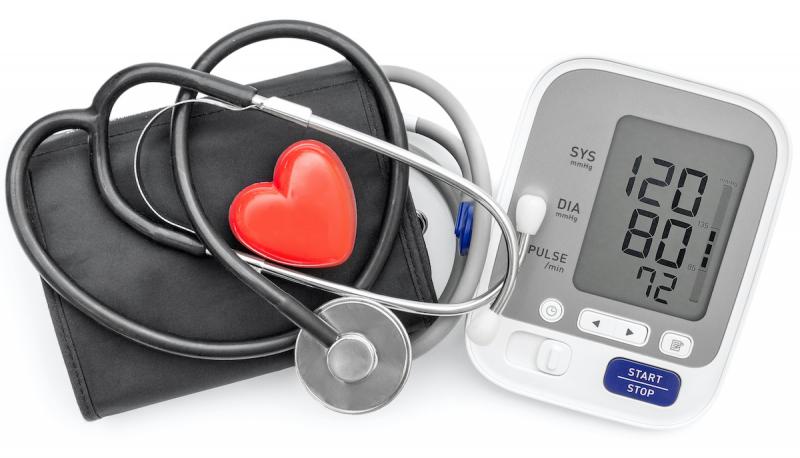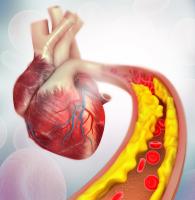
 High blood pressure (hypertension) is a common, and potentially serious, health issue. According to CDC statistics, about 47% of adult Americans have hypertension. That’s well over 100 million people. The CDC also says that only one in four of these people have their hypertension under control. Many don’t even know they have it and for many others, the medications they are taking are not keeping their blood pressure in healthy ranges.
High blood pressure (hypertension) is a common, and potentially serious, health issue. According to CDC statistics, about 47% of adult Americans have hypertension. That’s well over 100 million people. The CDC also says that only one in four of these people have their hypertension under control. Many don’t even know they have it and for many others, the medications they are taking are not keeping their blood pressure in healthy ranges.
Although it’s a serious problem, high blood pressure is not a disease, per se, but rather a symptom of problems with circulation. It needs to be addressed effectively because it increases the risk for several potentially deadly health issues. For starters, hypertension forces the heart to work harder, which can lead to various forms of heart disease. It also increases the risk of blood clots forming, which increases the risk of myocardial infarction (heart attacks), strokes, and various forms of thrombosis. It can cause blood vessels to blow from the pressure, causing an aneurism and can also damage the kidneys, eyes, brain, and other organs. So it’s important to monitor your blood pressure and keep it within healthy ranges.
Understanding the High’s (and Low’s) of Blood Pressure
Blood pressure is measured by two numbers, systolic and diastolic, as in 120/80. Systolic is the first number, which represents the pressure exerted when the heart pumps blood through the blood vessels. The second number, or diastolic pressure, is the pressure in the blood vessels when the heart is not beating. It is also called the resting blood pressure.
Adult blood pressure is considered normal when it falls between 90-130 systolic and 60-90 diastolic or 90/60 to 130/90. While blood pressure above 130/90 is classified as hypertension, research has shown that 115/70 to 125/80 is optimal for health and longevity. If your blood pressure does not fall in this range, the information in this newsletter can help you properly regulate your blood pressure to protect your health.
Drugs Aren’t the Answer
The drugs commonly used to treat high blood pressure don’t provide a lasting solution to the problem. People who start taking high blood pressure medications often do so for the rest of their life. This is because they don’t address the causes of high blood pressure, they only provide symptomatic relief. In addition they often stop working after a while and new drugs have to be prescribed. To permanently and naturally solve the problem, you need understand what’s happening when blood pressure is high.
The diastolic pressure (the second number) is the pressure needed to maintain full blood vessels. The blood vessel must be able to expand or contract to match the volume of liquid it is carrying. If the diastolic pressure increases the heart must work harder, increasing the systolic pressure, to move the blood where it needs to go.
Your body has various signaling systems that dynamically raise or lower blood pressure according to the demand for blood supply throughout your body. To respond to these signals, arteries have muscular walls that can expand and contract, increasing or decreasing the diameter of the blood vessels. This regulates flow while increasing or decreasing the pressure.
To put it simply, if there is insufficient blood flow to the extremities of the body, and the arteries can’t relax to accommodate increased flow, then the heart will pump harder so the blood can get where it needs to go. This increases the pressure, but also strains the heart and other organs.
Drugs work by tampering with the signaling systems that regulate blood flow. However, if the circulation to various parts of the body continues to be obstructed, the body will compensate to increase the pressure in the attempt to get blood where it is needed. Therefore, the only lasting solution is to find out what’s obstructing circulation and remove it so the blood can get where it needs to go.
Real Causes—Natural Solutions
With this understanding, we’re prepared to look at the causes of hypertension. In the next few articles we’ll do this by identifying the most common root causes of high blood pressure and how popular high blood pressure medications try to work around them.
Additional Resources
Strategies for Health by Steven Horne
The High Blood Pressure Hoax by Sherry A. Rogers, MD
The Nitric Oxide (NO) Solution by Nathan S. Bryan, PhD and Jenet Zand, OMD
Become a Member
Steven Horne's monthly member program is a way for you to get great information about herbs and natural healing to build your herbal business. Including the ability to share issues of Sunshine Sharing like this one. Click here to learn more.


